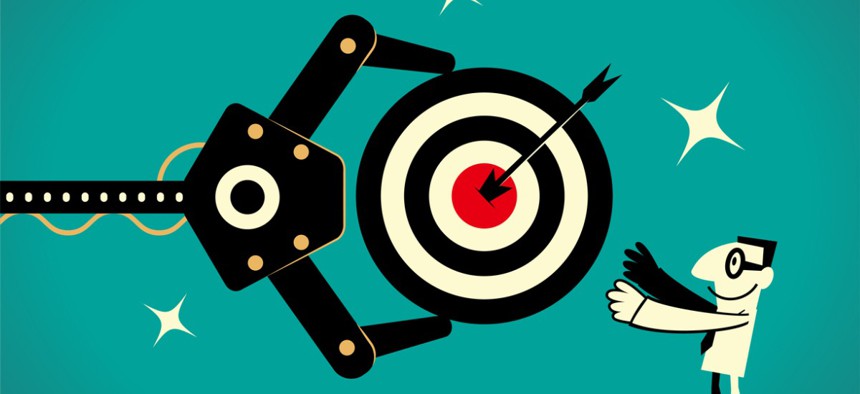Intentionally Creating a Culture that Prioritizes Customer Experience

alashi/istockphoto.com
Culture begins to shift when new behaviors are established that generate meaningful results, and wins are loudly, publicly celebrated.
Improving customer experience, or CX, isn’t new to federal workers. The 2018 President’s Management Agenda named it a cross-agency performance goal, and while the Office of Management and Budget has since defined a set of key CX measures, most departments continue to fall short of delivering personalized service that meets customer expectations. The tumultuousness of the past year and uncertainty ahead has only added to the challenges. In many cases, it has also reinforced the American people’s diminishing trust and satisfaction with public institutions. Rebuilding this trust and meeting performance goals by improving CX will require leaders from all levels to embrace organizational culture changes.
Yet, change is rarely easy, and adjusting organizational culture is no exception. Organizational culture is a pattern of behaviors reinforced by systems and people over time through explicit rules and processes, as well as unwritten norms. It is strengthened through years of hiring and promotion decisions, training, physical space and symbolic artifacts. Reshaping these processes or veering away from these decisions can be a daunting prospect for large agencies driven by mandate, policy and laws, particularly if they are encumbered by a well-meaning bureaucracy. But despite the challenge, federal leaders must create a CX culture and inculcate it into their organizations to have a sustainable impact.
Exactly how does culture change? Not through speeches, benchmarking or vision setting. Culture begins to shift when new behaviors are established that generate meaningful results, and wins are loudly, publicly celebrated.
Culture should tie inextricably to strategy. In our work, culture change is an intentional byproduct of executing against a strategy in a fundamentally different way. With many agencies currently rethinking their strategies, including how to better serve customers, this is an opportune moment to address culture as well.
Leaders must define the desired culture and the behaviors needed to produce it. It is important to articulate why the new culture is critical to mission delivery by appealing to employees’ hearts and heads. They can then follow the process summarized here.

Process for Creating Intentional Culture Change
The first step to intentionally drive change is instituting a set of carefully chosen actions or initiatives that improve CX while fostering the new underlying cultural behaviors: customer focus, agility, empowerment, innovation and the inclusion of different perspectives and voices. We recommend including targeted 90-day projects, designed to achieve rapid, measurable results and drive new ways of working, alongside traditional change initiatives. Whenever measurable CX results are achieved, leaders should celebrate and communicate them, highlighting both the tangible win and the new behaviors that generated it.
When intentionally transforming culture, it is critical to establish the foundational baseline, then measure changes in beliefs and behaviors over time. Doing this enables leaders to undertake the journey holding a map and guided by data. Assessment and diagnostic tools must account for each agency’s unique mission and CX nuances.
Leaders looking to redesign their culture need to familiarize themselves with common pitfalls:
- Driving change by decree.
- Failing to align with the organization’s mission and vision or connect to tangible outcomes.
- Stopping too soon before the new culture is fully embedded.
But while culture change is challenging and takes time, it can significantly improve CX and the overall wellbeing of your agency. The time to start is now!
Martha Kesler, MSOD, is the director of Kotter’s Federal Government Practice.
Catherine Paul-Chowdhury, Ph.D., is an affiliate at Kotter.





